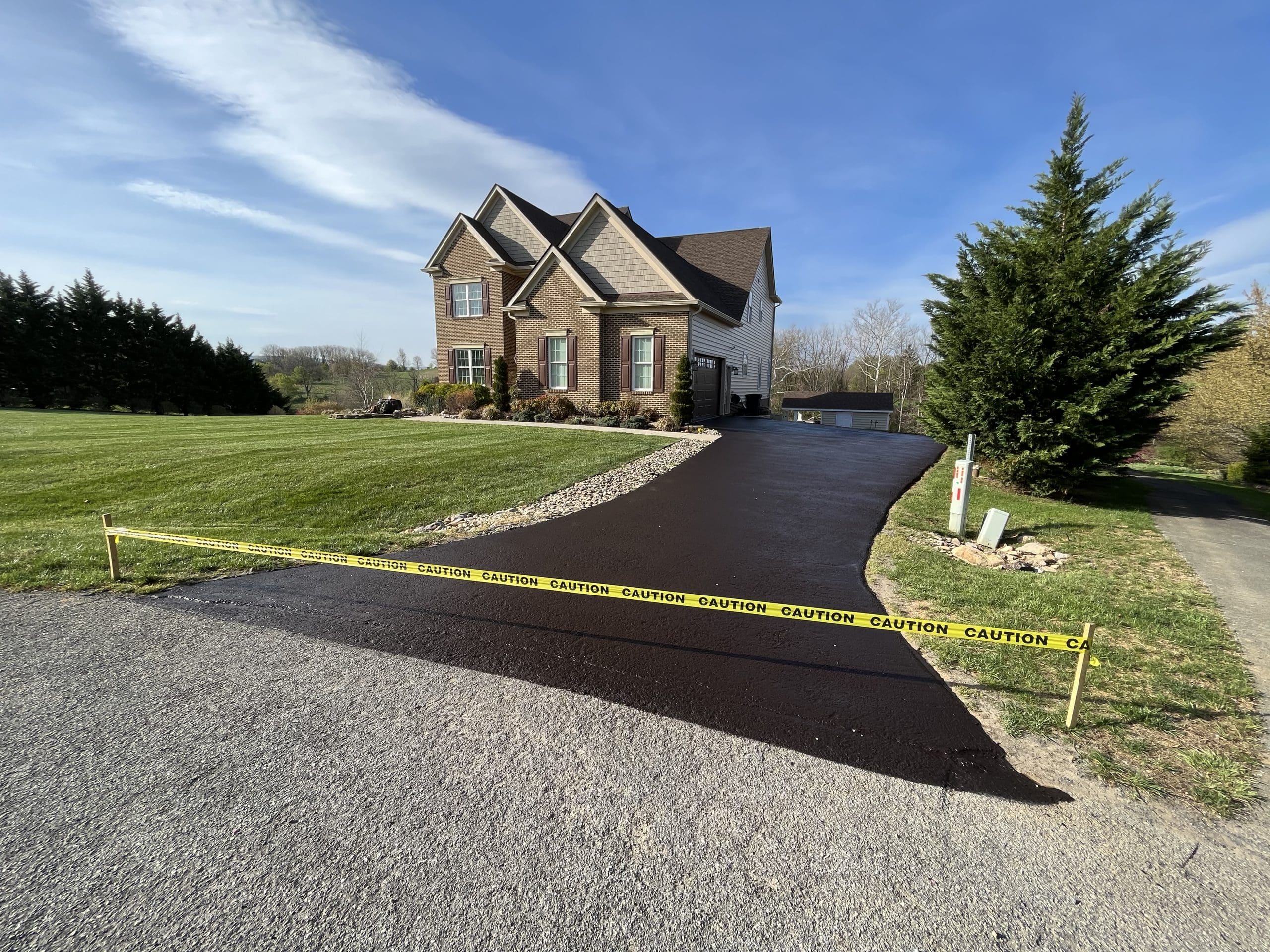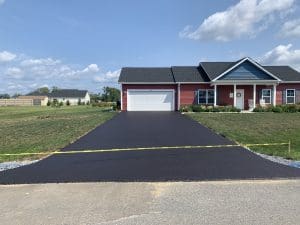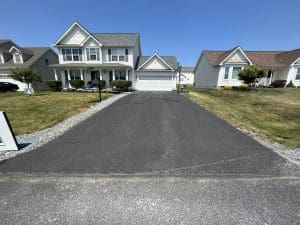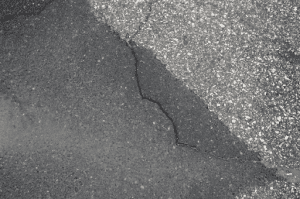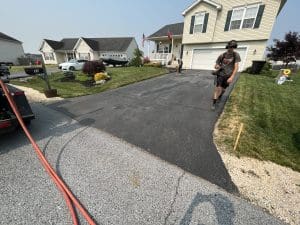Sealcoating 101: Sealcoating Decoded:
When it comes to safeguarding and nurturing asphalt surfaces, sealcoating stands as an indispensable chapter in the maintenance playbook. By ushering in a protective layer that embraces the asphalt, sealcoating not only prolongs its lifespan but also acts as a steadfast guardian against damage, ensuring it remains a visual masterpiece. In this article, we embark on a journey through the basics of sealcoating 101 and delve deep into the science that underpins this crucial process.
Unveiling the Essentials of Sealcoating:
The Essence of Sealcoating Sealcoating emerges as the technique of choice for safeguarding asphalt surfaces. It entails the application of a protective coating that acts as an impervious shield against the corrosive impacts of UV rays, water, chemicals, and the rigors of daily wear and tear. More than just an aesthetic enhancer, sealcoating proactively combats cracks, potholes, and various forms of impairment, serving as the linchpin of asphalt’s longevity.
When it comes to nurturing asphalt expanses, sealcoating isn’t just a mere step—it’s a paramount necessity. This layer of defense safeguards against the onslaught of nature and harmful substances, dramatically reducing the need for costly repairs while fostering the asphalt’s endurance. In the absence of sealcoating, asphalt stands exposed to the unforgiving elements and agents that can usher in its gradual deterioration over time.
The Significance of Sealcoating for Asphalt:
Asphalt, renowned for its resilience and durability, often graces roads, driveways, and parking lots due to its sturdy composition. Yet, as with all materials, time leaves its mark. The relentless forces of nature, oils, and other agents can gradually degrade and fissure the surface of asphalt.
This is where sealcoating steps in, a stalwart protector against such onslaughts. By conjuring a barrier, it repels water, preventing its infiltration into the asphalt and stymying erosion. Moreover, sealcoating creates an impenetrable wall against the sun’s detrimental UV rays, which are known to fade and erode the asphalt’s surface.
One of the crown jewels of sealcoating lies in its knack for thwarting the emergence of cracks on asphalt. These fissures often emerge due to the expansion and contraction of asphalt brought on by temperature fluctuations. When moisture seeps into these cracks and freezes, it expands, exacerbating the damage. Sealcoating seals these fractures, cutting off water’s access and mitigating the threat of further deterioration.
Furthermore, the wonders of sealcoating extend to guarding asphalt against corrosive chemicals like gasoline, oil, and salt. These menacing agents have the potential to erode the asphalt, resulting in brittleness and disintegration. By establishing a protective buffer, sealcoating effectively precludes these substances from coming into direct contact with the asphalt, thereby preserving its integrity.
Beyond its protective mantle, sealcoating also bestows a visual revival upon asphalt surfaces. Over time, the sun’s UV rays can cast a fading spell on asphalt, rendering it lackluster. Sealcoating restores its resplendent ebony hue, gifting it a rejuvenated and meticulously maintained appearance. The outcome? A significant augmentation in the aesthetic allure of driveways, parking lots, and roadways.
In the grand scheme of things, sealcoating embodies an essential practice for nurturing asphalt expanses. It not only safeguards against deterioration but also extends the asphalt’s life, curbs the demand for exorbitant repairs, and transforms the visual landscape. Through consistent sealcoating investments, property owners can weave a narrative of endurance for their cherished asphalt surfaces.
The Scientific Core of Sealcoating:
Sealcoating achieves its magic by filling surface voids and erecting a protective layer over the asphalt. In essence, it seals the asphalt’s exterior, warding off water, chemicals, and assorted intruders from infiltrating and wreaking havoc.
When the sealcoating agent is applied, it takes up residence in small cracks and voids, quashing their potential to expand and evolve into more menacing issues. It also confers a velvety texture to the surface, easing its cleaning and thwarting the accumulation of debris within the asphalt. This, in turn, harmonizes with the broader goal of sustaining the asphalt’s overall robustness.
Yet, how does sealcoating orchestrate this symphony of benefits? The answer lies in the chemistry of the components and the orchestration of their interaction with the asphalt.
As the sealcoating material embraces the asphalt, a defensive barricade is erected. This rampart intercepts water, halting its infiltration into the asphalt and precluding damage. Water’s role as an instigator of asphalt damage cannot be understated—its freezing and subsequent expansion spark the genesis of cracks and potholes. By plugging the entryway, sealcoating effectively curtails water’s malevolent influence.
But water isn’t the sole antagonist. Sealcoating also assumes the role of a guardian against chemicals and agents that contribute to asphalt decay. Whether it’s the insidious chemicals present in gasoline, oil, or the harsh embrace of road salts, sealcoating becomes an impenetrable shield, preventing these adversaries from infiltrating the asphalt and nurturing its vitality.
Moreover, the polished surface bestowed by sealcoating facilitates easy cleaning. As time passes, debris—leaves, dirt, sand—can collect on the asphalt. Without the armor of sealcoating, these agents can burrow into the asphalt, hastening its deterioration. But with a sealed surface, debris can be effortlessly swept away, preserving the pristine state of the asphalt while simultaneously ensuring its integrity.
The Alchemy of Sealcoating Components:
Sealcoating concoctions often encompass an amalgamation of asphalt emulsion, coal tar, polymers, fillers, and additives. The symphony of these constituents constructs a robust and protective coating.
Asphalt emulsion or coal tar commands center stage as the principal binder, establishing adhesion to the asphalt surface. This adhesive connection ensures the sealcoating’s steadfast presence, thus orchestrating a symphony of protection.
Polymers, the unsung heroes, take the stage to heighten the sealcoat’s strength and flexibility. These polymers confer heightened durability to the coating, empowering it to withstand temperature fluctuations and the strains of traffic. By introducing polymers into the mix, the sealcoat acquires a shield against cracking and peeling, guaranteeing an extended lifespan for the asphalt surface.
The saga continues with the introduction of fillers—sand or minerals—which serve dual purposes. Firstly, they amplify the robustness of the sealcoat, rendering it resistant to wear and tear. Secondly, they infuse texture into the surface, thereby enhancing traction and ensuring the safety of both vehicles and pedestrians.
Last but not least, additives make a grand entrance to elevate specific attributes. These additives may include UV stabilizers, which serve as sentinels against the sun’s ultraviolet rays, or drying agents that expedite the curing process.
The art of selecting and harmonizing these materials equates to the creation of a sealcoating concoction that doesn’t just amplify the appearance of asphalt surfaces but also provides enduring fortification against the elements and the routine ravages of life.
Varieties of Sealcoating Products Coal Tar Sealing:
Time-Honored Tradition Coal tar sealers, steeped in tradition, have been a trusted choice for sealcoating for many a year. They excel in durability and offer robust protection against chemicals and UV rays. However, concerns about environmental impact and potential health implications have heralded the emergence of alternative sealcoating products.
Embracing Asphalt Emulsion Sealers:
Bearing a water-based essence, asphalt emulsion sealers emerge as the environmentally conscious alternative. These sealers deftly guard against water penetration and UV onslaughts. Furthermore, their versatility shines through as they accommodate application across a broader spectrum of temperatures compared to their coal tar counterparts.
A Glimpse of Acrylic Sealers:
Acrylic sealers materialize as another avenue in the sealcoating landscape. Celebrated for their unmatched resistance to UV rays and swift drying properties, acrylic sealers offer exceptional defense. Notably, they also shield against chemicals and water, rendering them a preferred choice for high-traffic zones.
Mastering the Art of Sealcoating The Prelude to Sealcoating:
Before the sealcoat sweeps the stage, meticulous preparation takes precedence. This entails a thorough cleansing of the asphalt surface to rid it of dirt, debris, and any telltale signs of oil or gasoline. Cracks and potholes deserve their share of attention, necessitating repair, and the canvas must be allowed to dry completely.
Equally vital is the safeguarding of the surroundings—be it the grass or concrete. A diligent approach here involves the use of tape or a barrier to delineate a pristine border.
The Sealcoating Performance:
Sealcoating embraces an array of application methods—spraying, brushing, or squeegeeing. The method of choice may depend on the expanse’s size and the arsenal at one’s disposal.
Irrespective of the technique, uniformity is paramount. Application in thin, successive layers ensures comprehensive coverage and avoids pooling or uneven drying.
Sustaining the Afterglow of Sealcoating:
In the aftermath of sealcoating, adherence to proper maintenance practices is pivotal in unlocking the full spectrum of benefits and elongating the sealcoat’s tenure. This involves routine cleansing to dispel the accumulation of debris and detritus that might attempt to stake their claim on the surface. In tandem, periodic inspections serve as sentinels, detecting any anomalies—cracks, potholes—that beckon repair.
Dissecting the Myths Surrounding Sealcoating Unraveling Misconceptions:
Misconceptions shroud the realm of sealcoating, necessitating their unveiling. One widespread myth posits that sealcoating holds the power to mend all existing issues with an asphalt surface. While sealcoating performs admirably in a preventive role, major cracks and structural woes demand pre-emptive action, preceding sealcoating.
Another fallacy contends that sealcoating serves as a one-time remedy. In reality, sealcoating is an ongoing ritual, a periodic practice that should be reincarnated every few years to perpetuate optimal protection and aesthetics.
Separating Fact from Fiction in Sealcoating:
Clarity illuminates the path forward, unmasking the truths of sealcoating. When administered diligently and upheld through maintenance, sealcoating extends the lifespan of asphalt, culminating in substantial savings over time. It unfurls a barrier against the elements, curbs the advance of damage, and revives the splendor of asphalt surfaces.
However, the caveat stands: Sealcoating ought to be entrusted to seasoned professionals armed with expertise and appropriate equipment. Proper application techniques and the utilization of high-quality sealcoating materials are the bedrock for achieving the desired outcomes.
To encapsulate, sealcoating stands as a sanctified ritual, grounded in science, that preserves and extends the life of asphalt surfaces. By delving into the basics and understanding the scientific intricacies, individuals empower themselves to make well-informed decisions in nurturing their cherished asphalt expanses. The key? Embrace a regimen of regular sealcoating alongside diligent maintenance, ensuring the longevity and robustness of asphalt surfaces for years to come.
